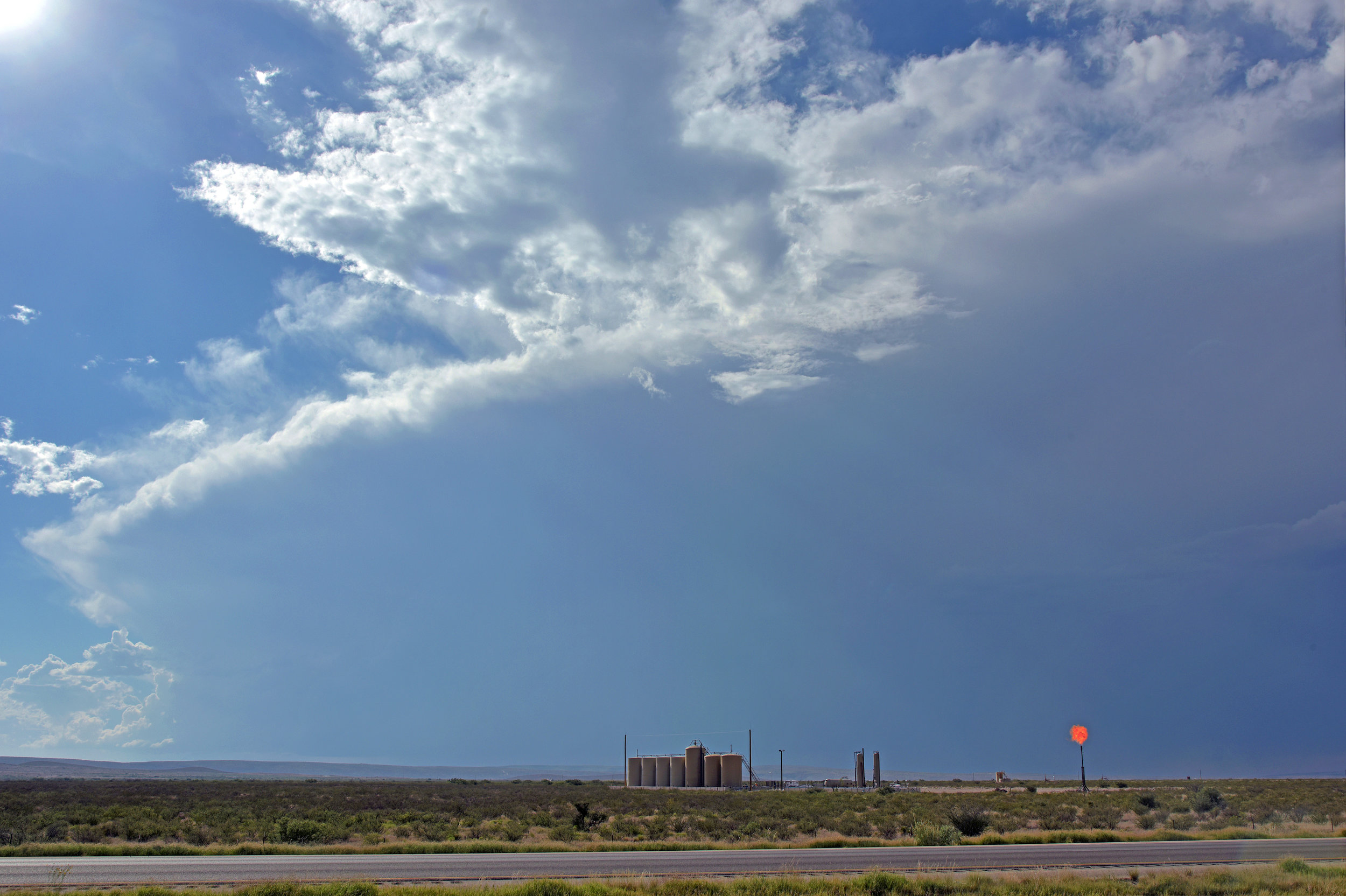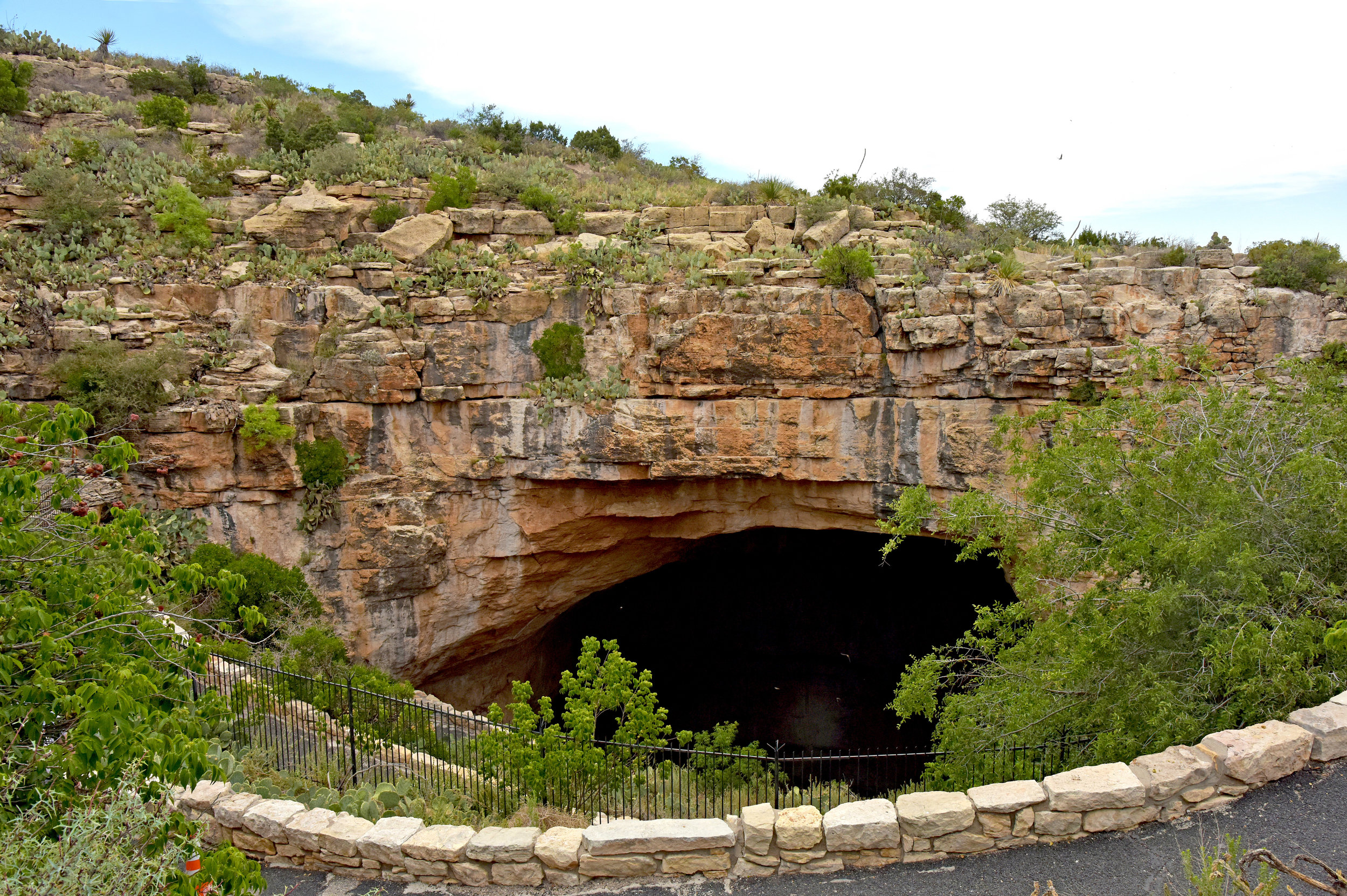
The Natural Entrance route descends more than 750 feet into the earth following steep and narrow trails through a tall and spacious trunk passage called the Main Corridor.
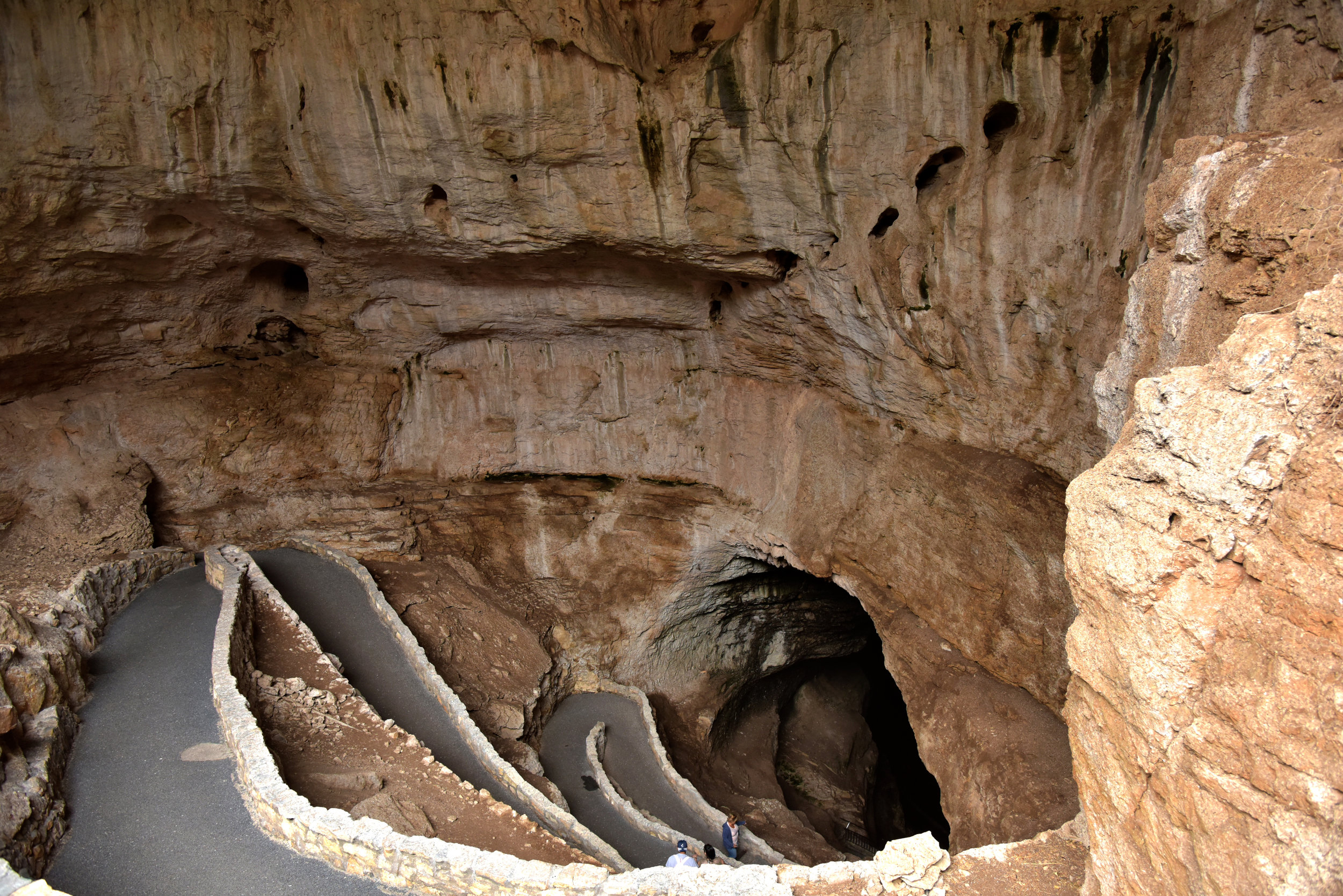
The Carlsbad Caverns are deep beneath the Chihuahuan Desert in southern New Mexico - a labyrinth of more than 300 limestone caves, carved over 250 million years ago; it is a 1¼-mile (2 km) descent, equivalent to about 79 stories, with 30 miles of mapped passages..
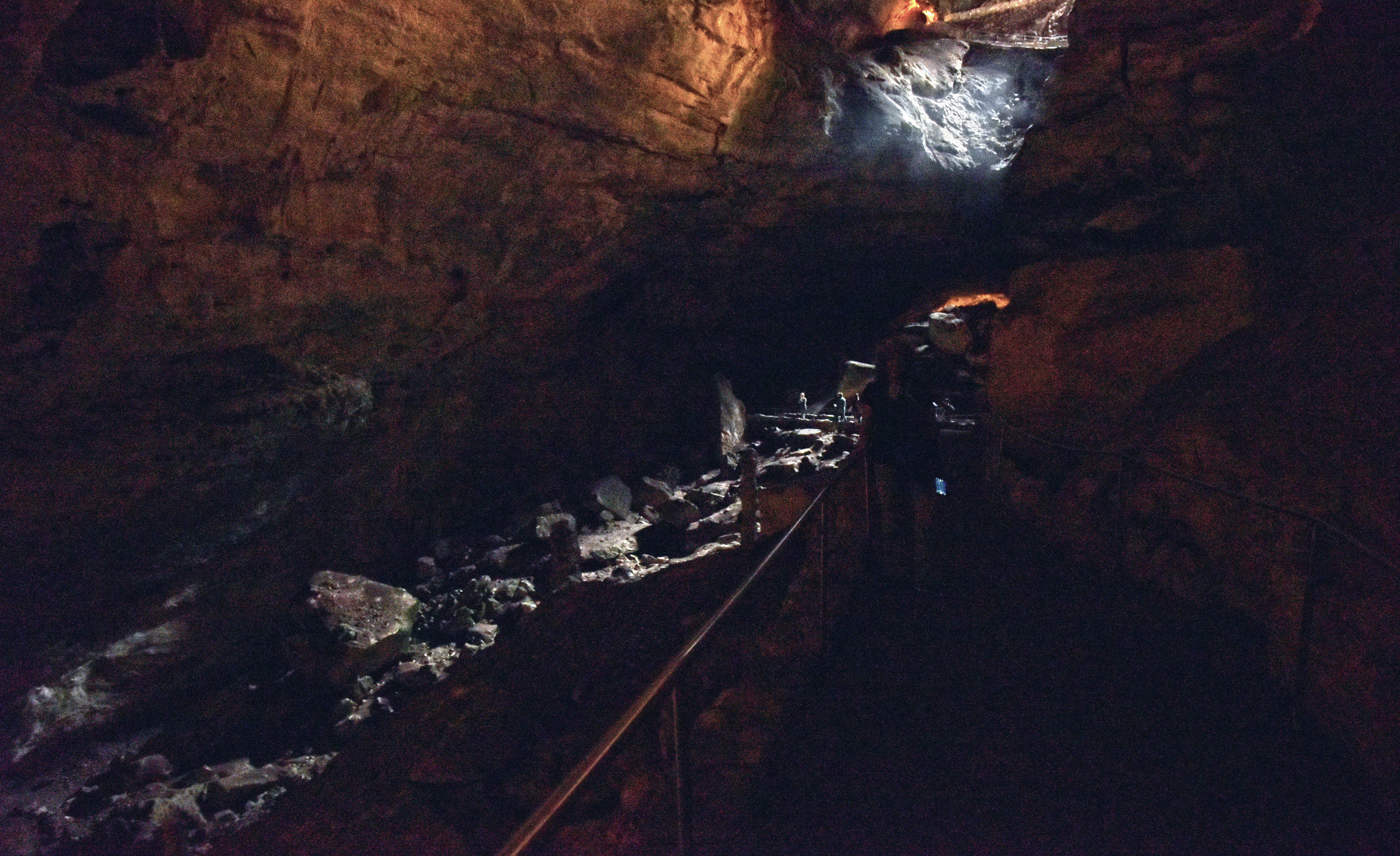
This is the upper part of the cave where there is still enough natural light to see. Without artificial light, the deep cavern beyond this point would be totally dark.
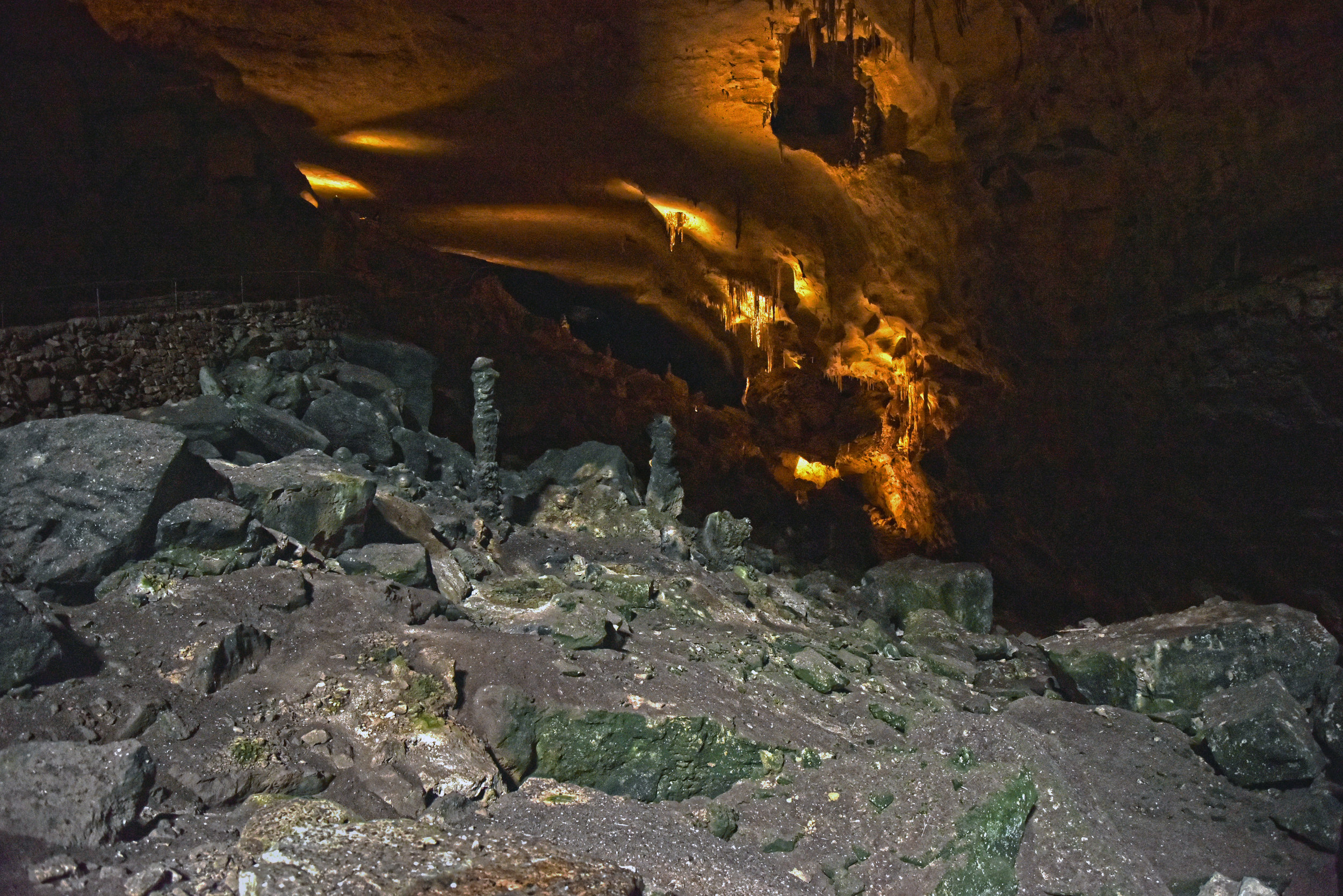
Green algae grows on rocks here, but few other plants can survive in the dim light. Snakes, mice, racoons, and ringtails sometimes seek shelter here.

Columns are formed when the stalagmite forming from the floor below and the stalactite forming from the ceiling directly above continue to develop until they meet and create one formation.
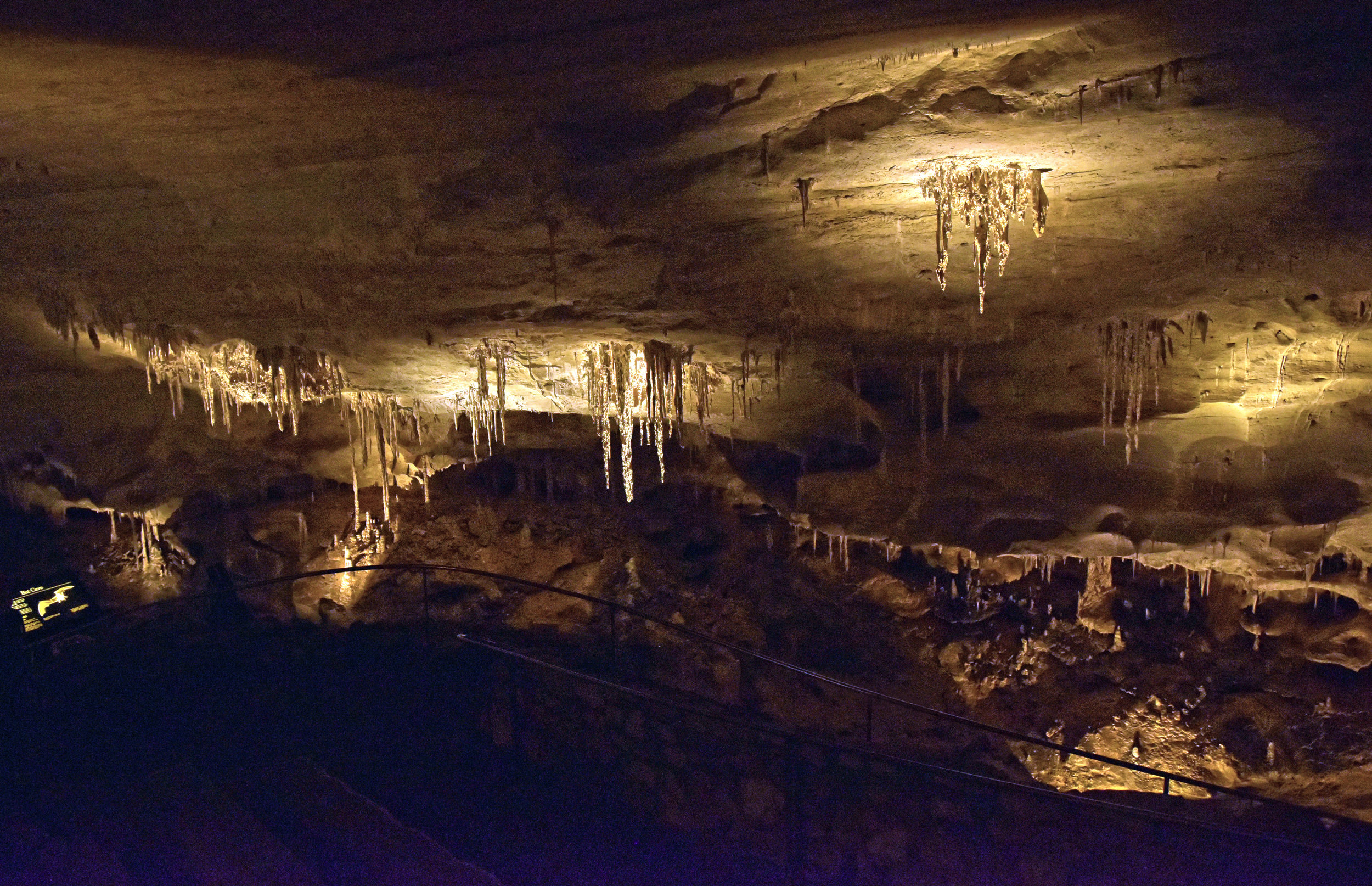
One of the most notable sights at Carlsbad Cavern is the spectacle of the park’s 400,000 Brazilian free-tailed bats leaving the cave each night at sunset in dramatic clouds of flapping wings.
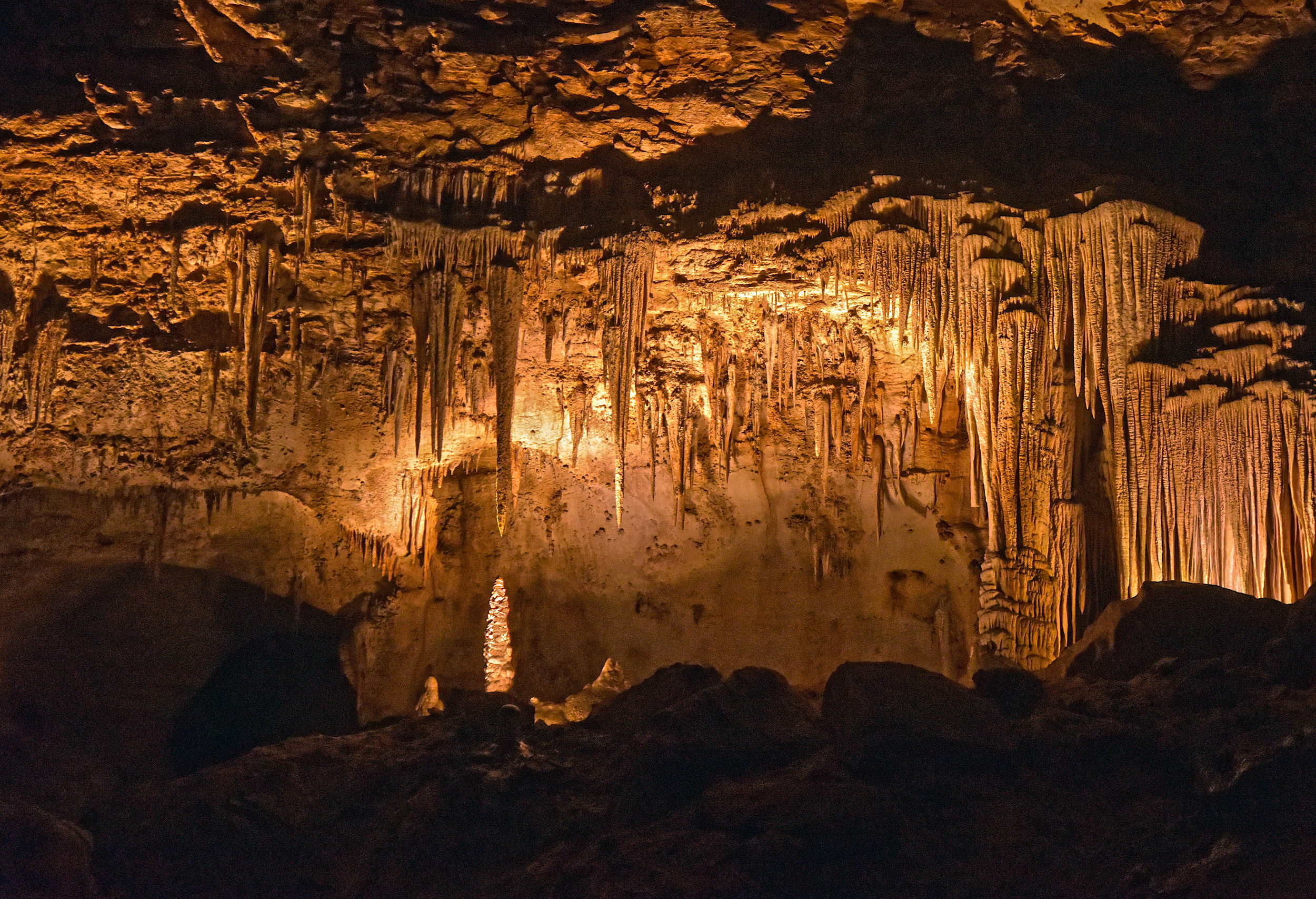
When water flows down through the ground and into a cave, it dissolves a mineral called calcite (a major building block of limestone) and carries it through cracks in the ceiling forming a stalactite - which usually grows anywhere between a quarter-inch and an inch every century.

Draperies and Flowstone Speleothems in the Whales Mouth area of the Carlsbad Caverns.
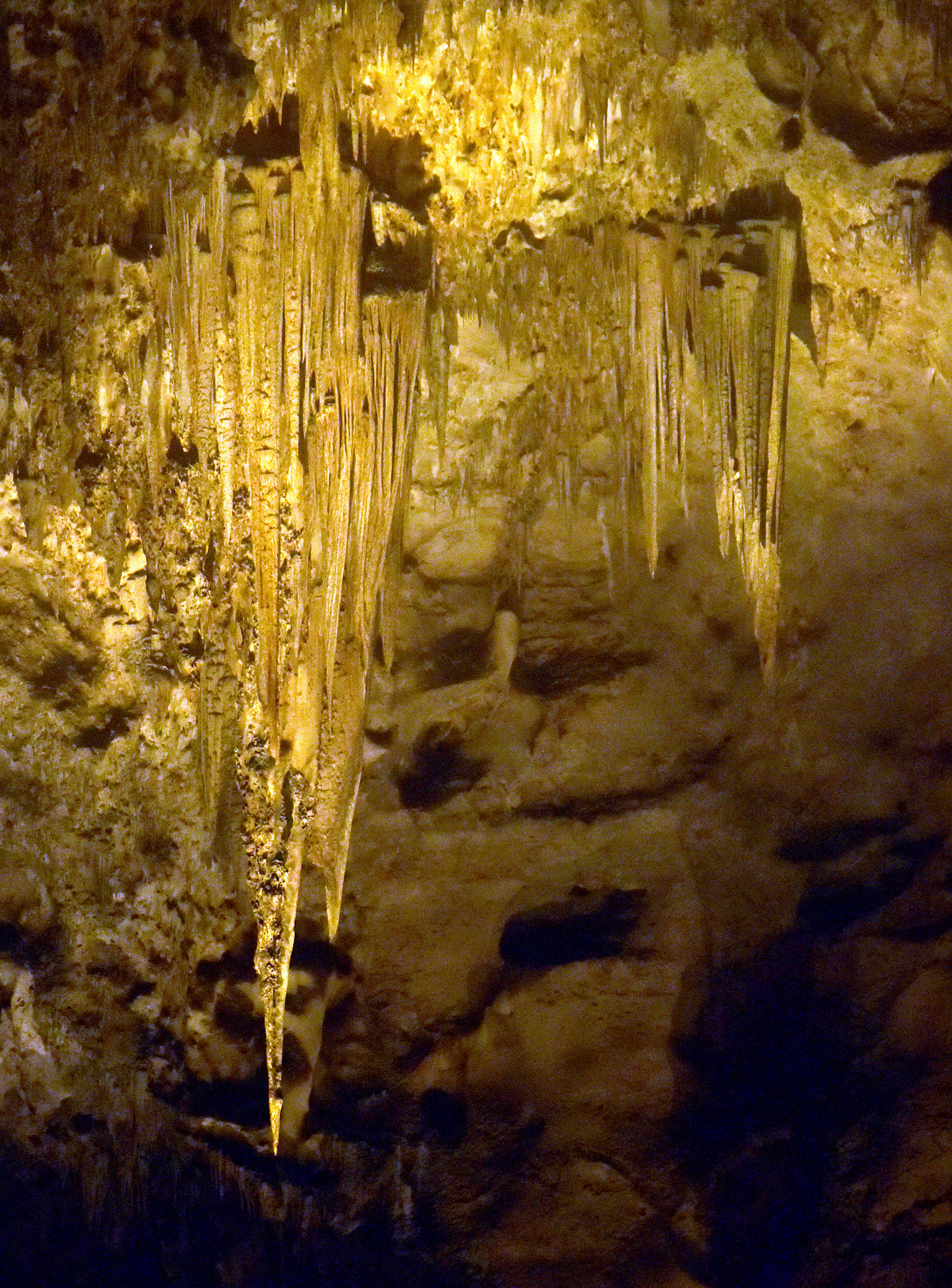
Chandeliers are complex clusters of ceiling decorations. This stalactite hangs like an icicle.
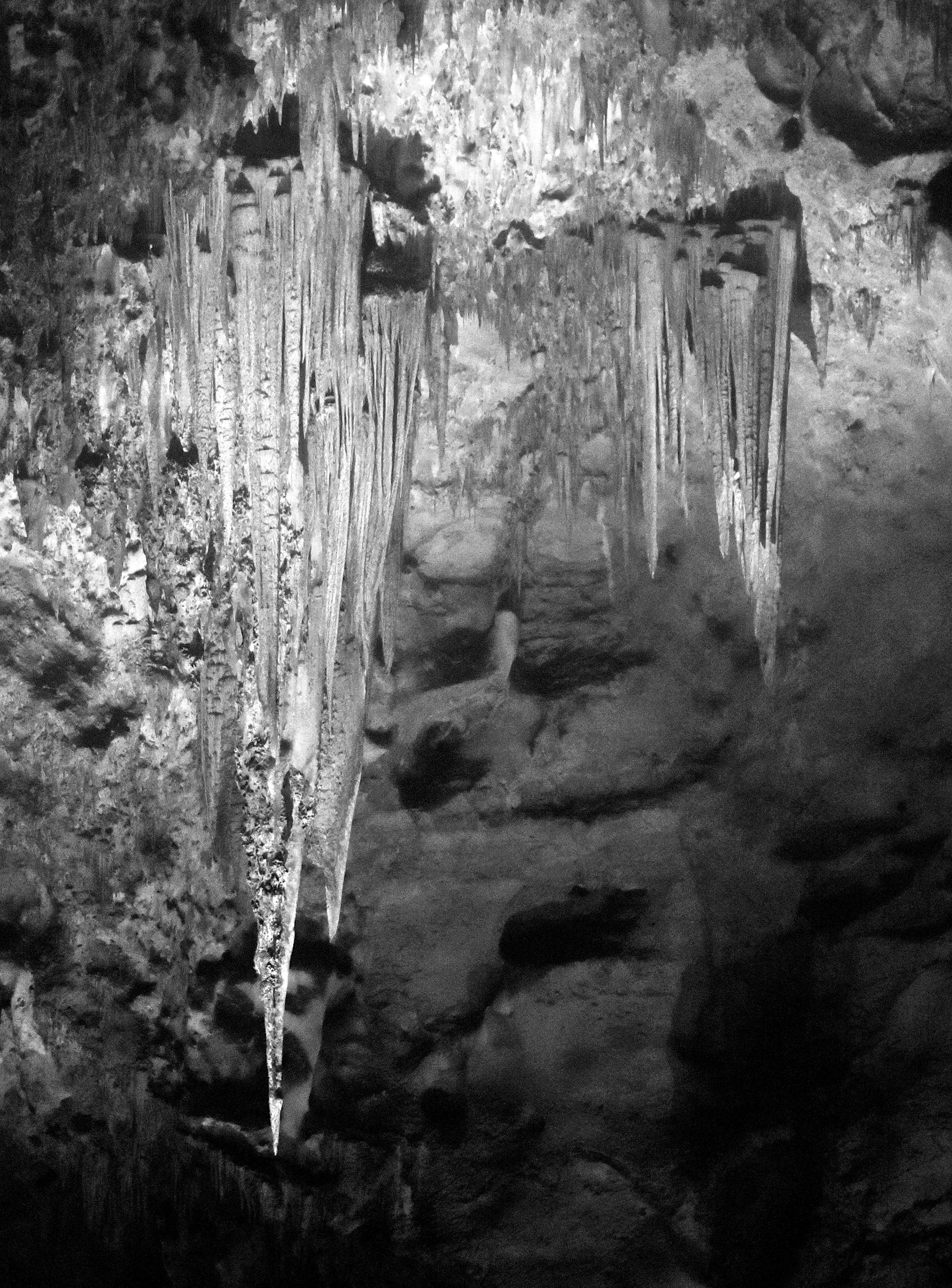
Carlsbad Caverns National Park, New Mexico
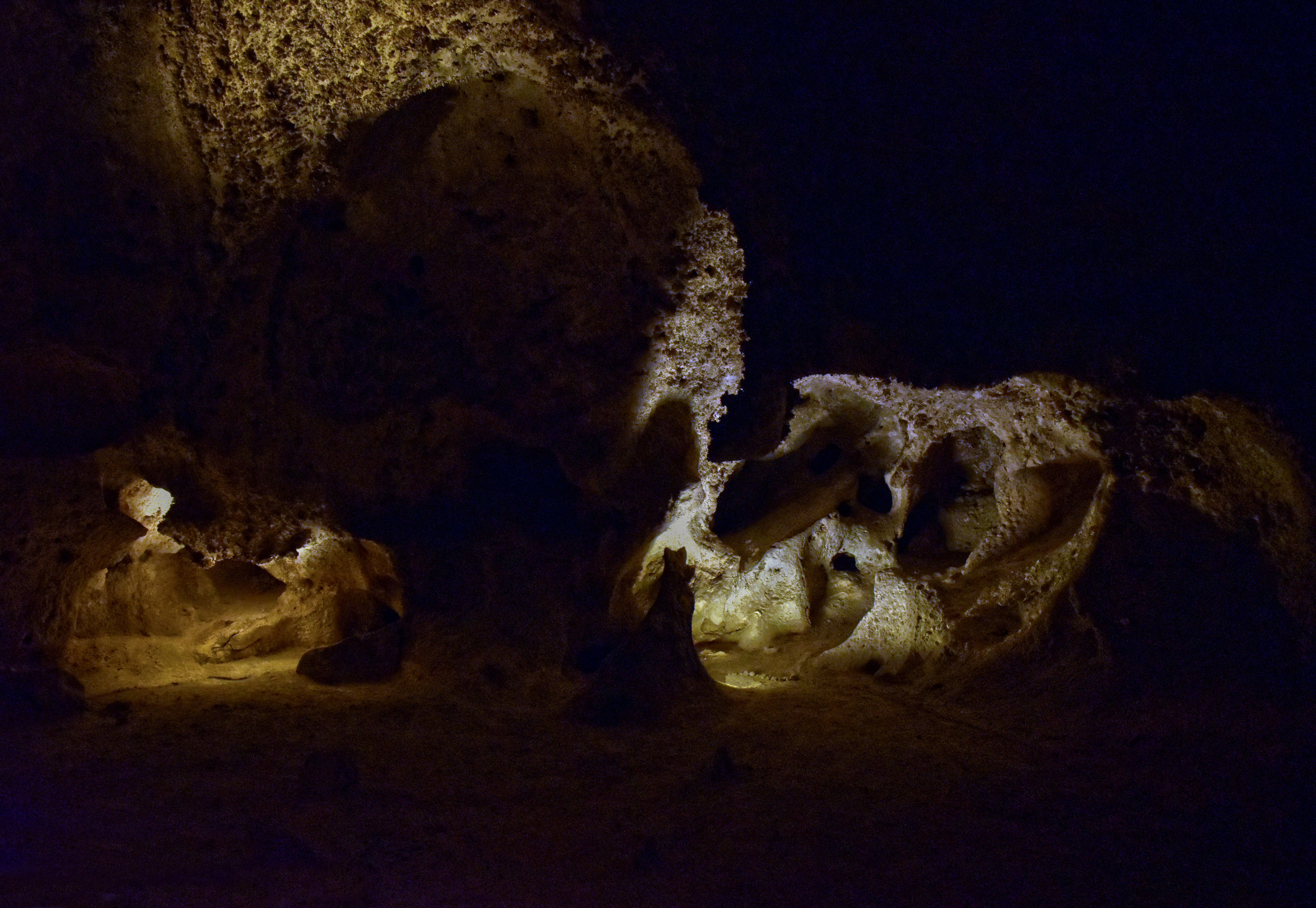
The limestone here is riddled with holes like a Swiss cheese. Explorers named this place "The Boneyard" because the rounded shapes of the rocks reminded them of old bones.
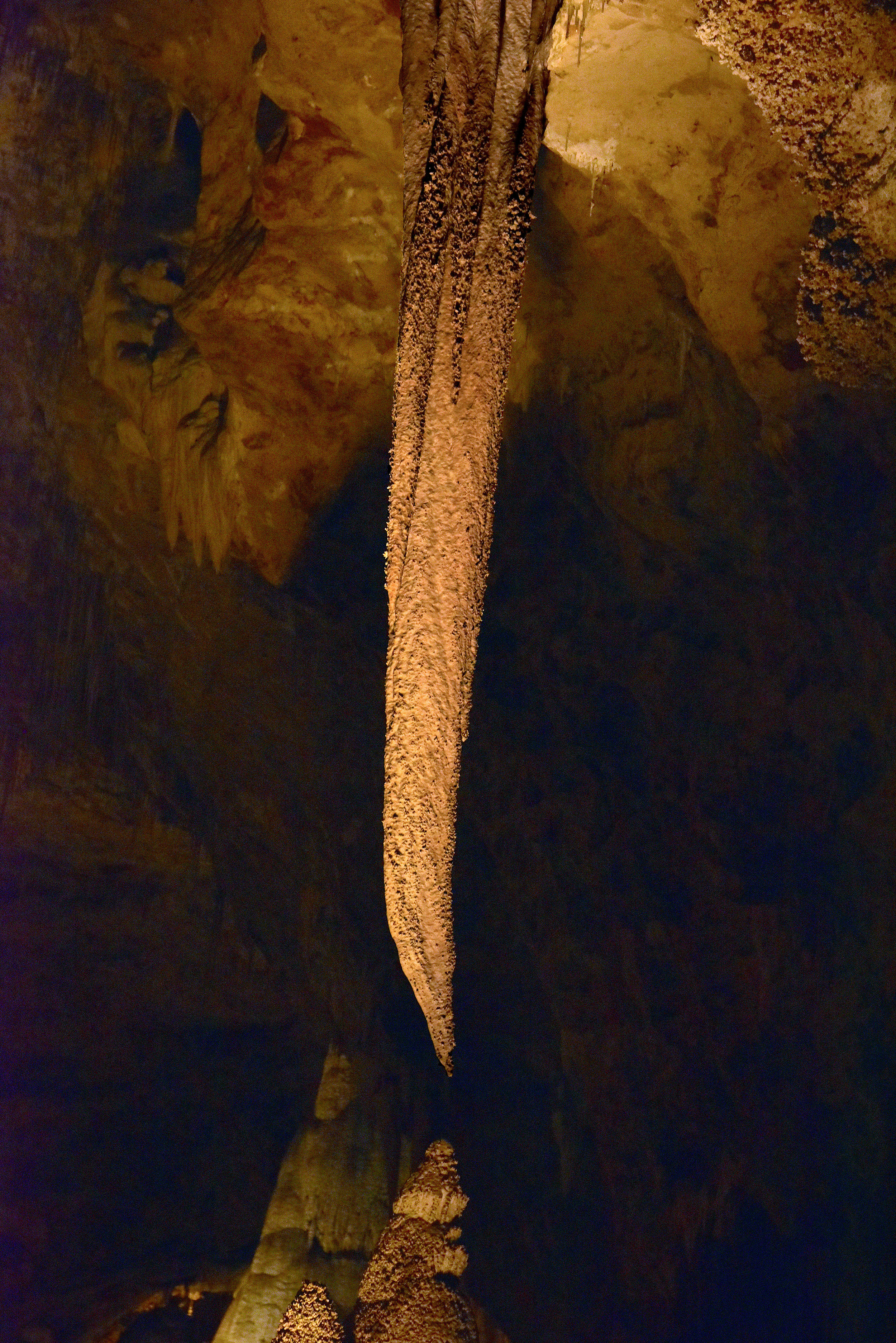
Iron and other minerals, as well as acids from surface vegetation, combine with calcite crystals to add shades of red, orange and black to the color of speleothems, such as this stalactite and the stalagmites below.
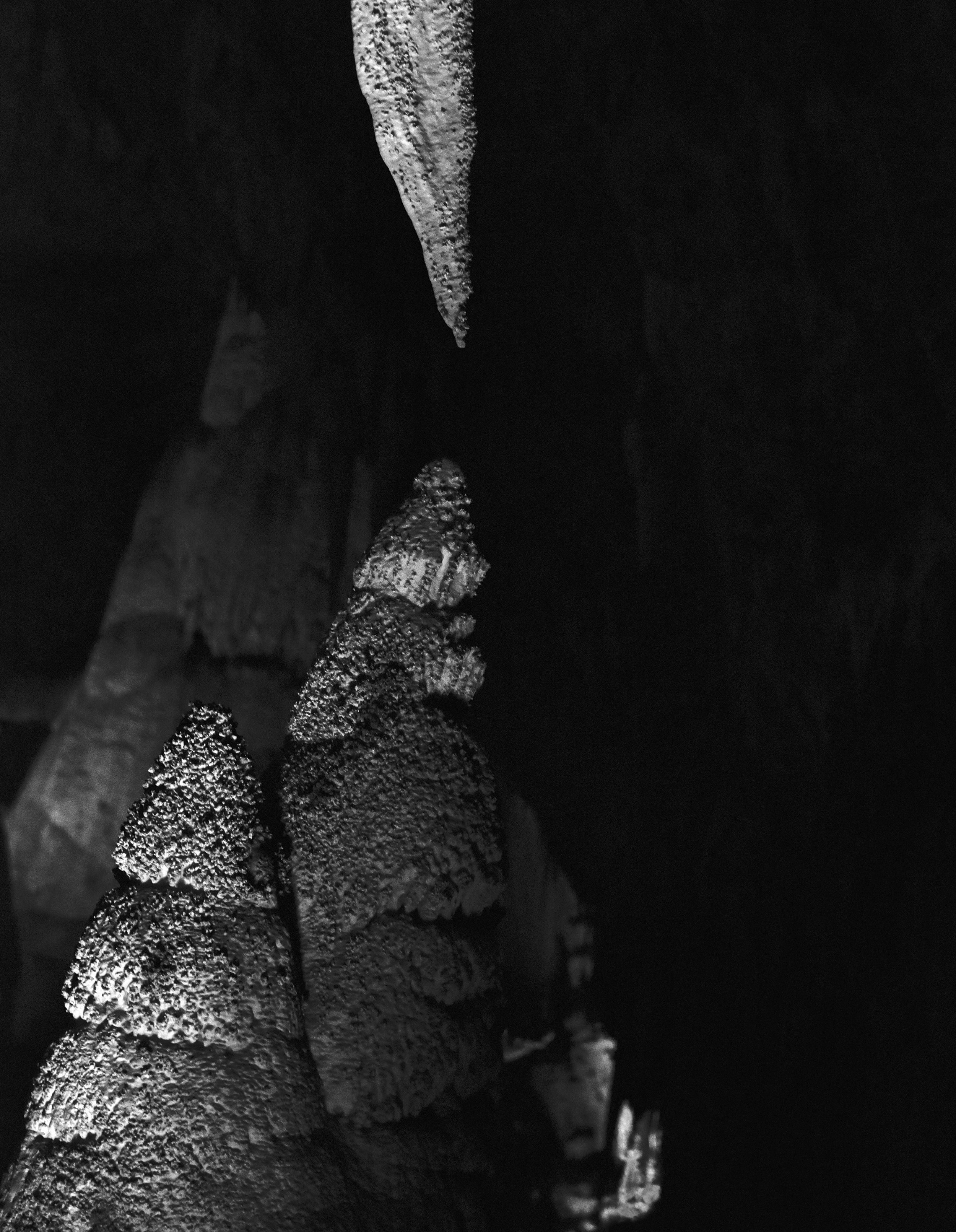
The water dripping from the end of a stalactite falls to the floor of a cave and deposits more calcite into a mound. A stalagmite will form in a conelike shape, as seen here.
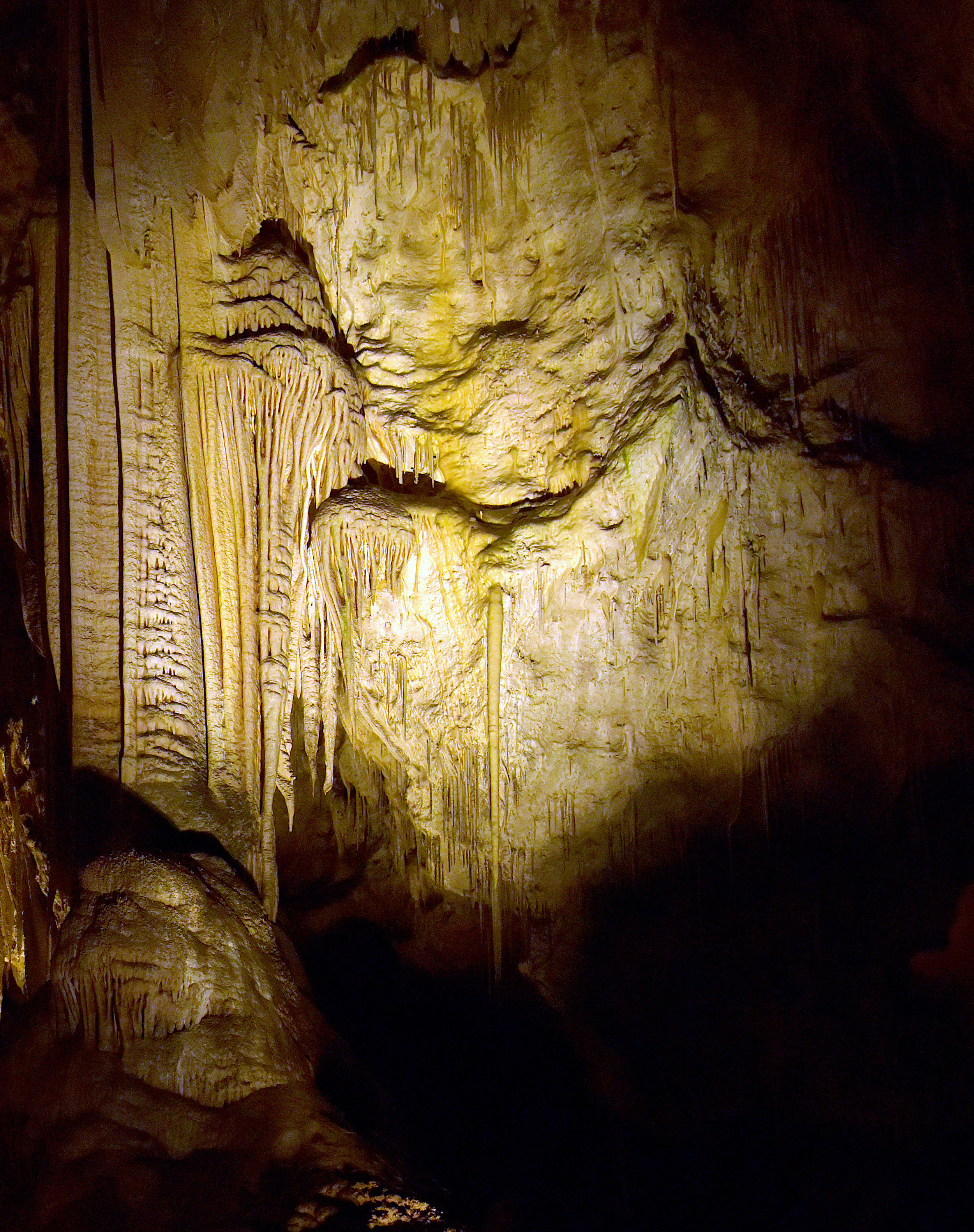
Here are examples of soda straws, stalactites, and drapery. Soda straw stalactites form along a drop of water and continue growing down from the cave ceiling forming a tubular stalactite, which resembles a drinking straw in appearance. Their internal diameter is exactly equal to the diameter of the water drop.
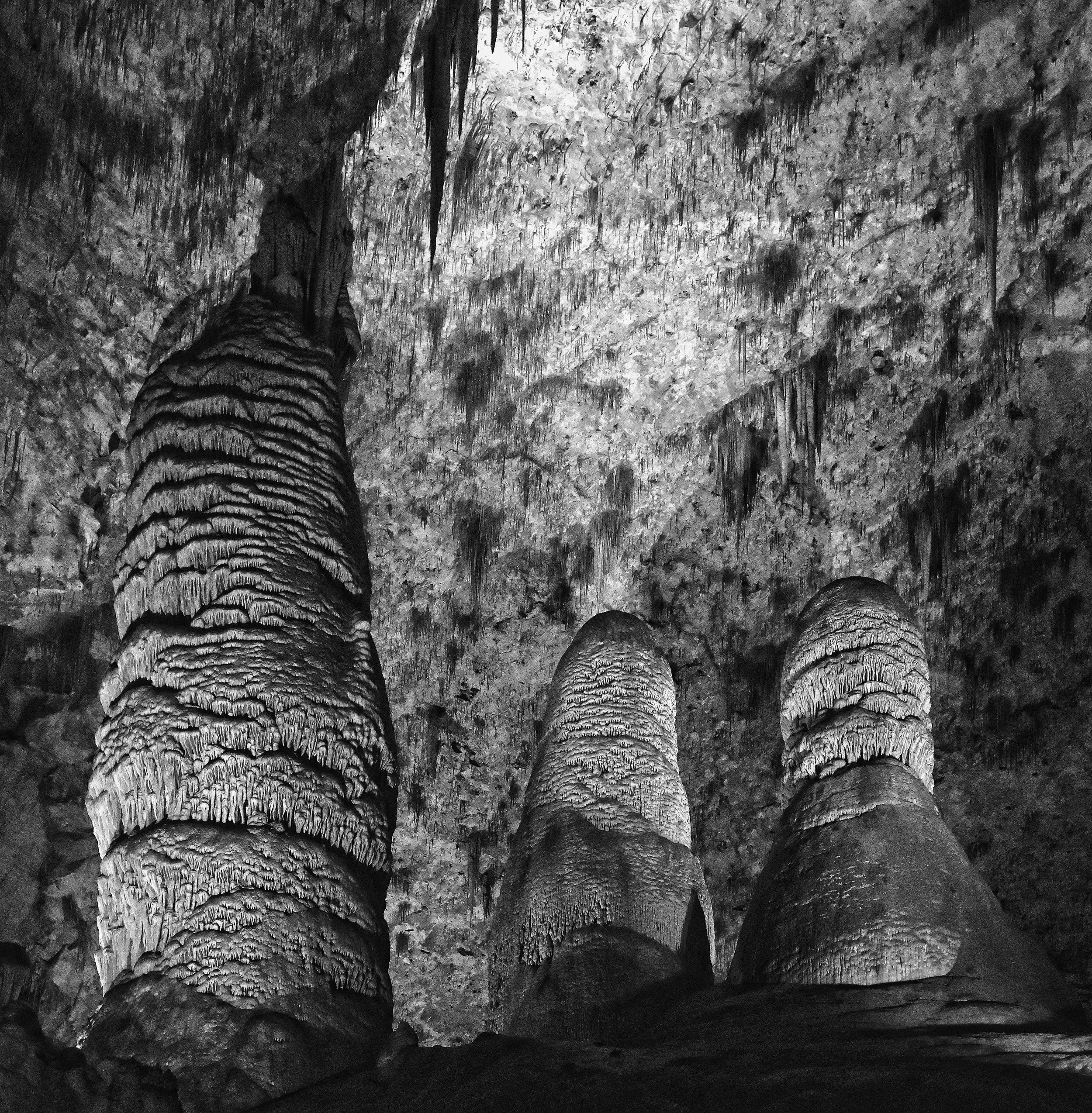
Stalagmites in the Big Room - a natural limestone chamber almost 4,000 feet (1,220 m) long, 625 feet (191 m) wide, and 255 feet (78 m) high at the highest point.
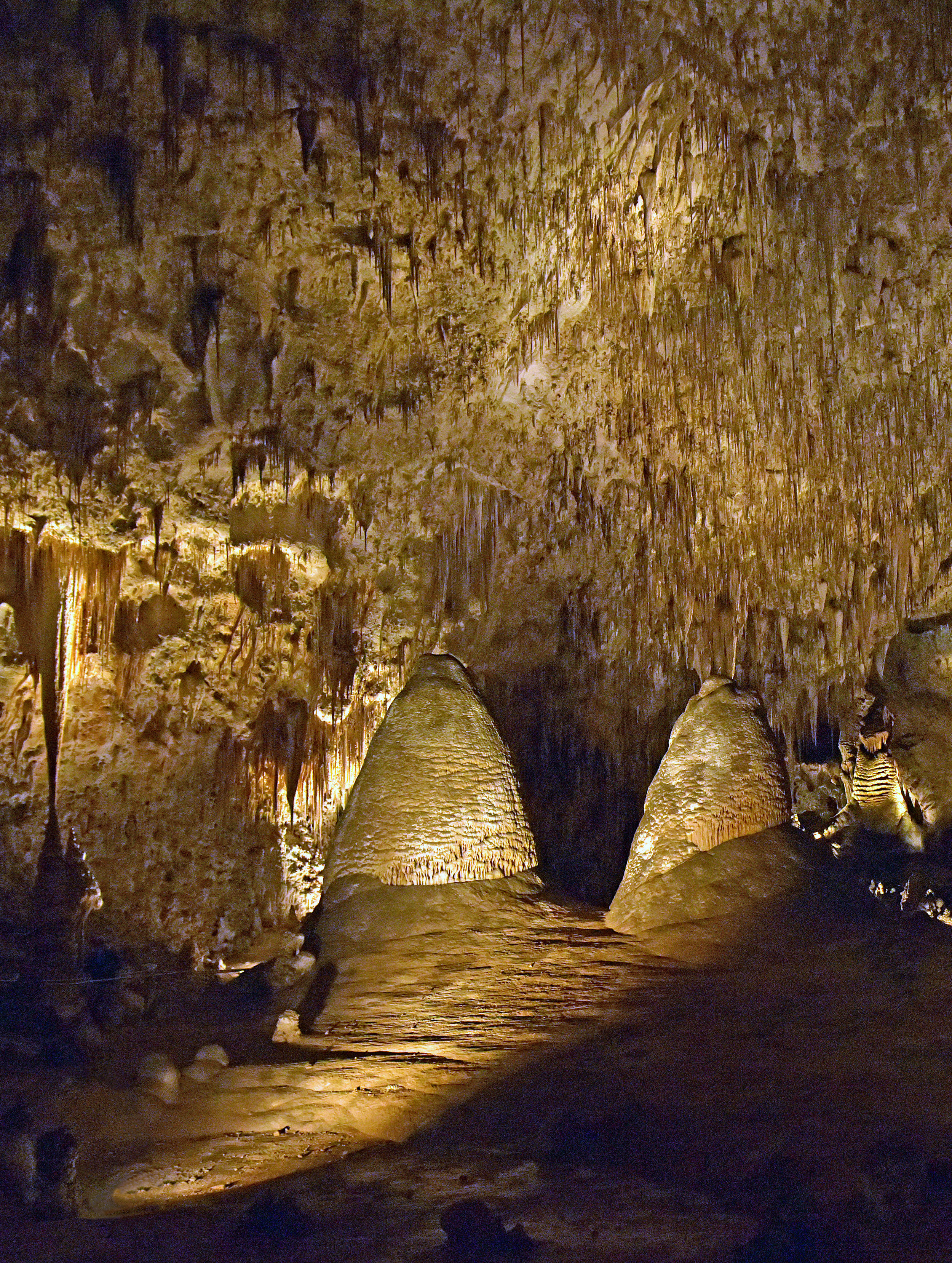
The Big Room is the largest known natural limestone chamber in the Western Hemisphere, with floor space estimated at more than 600,000 square feet, an area comparable to 14 football fields.
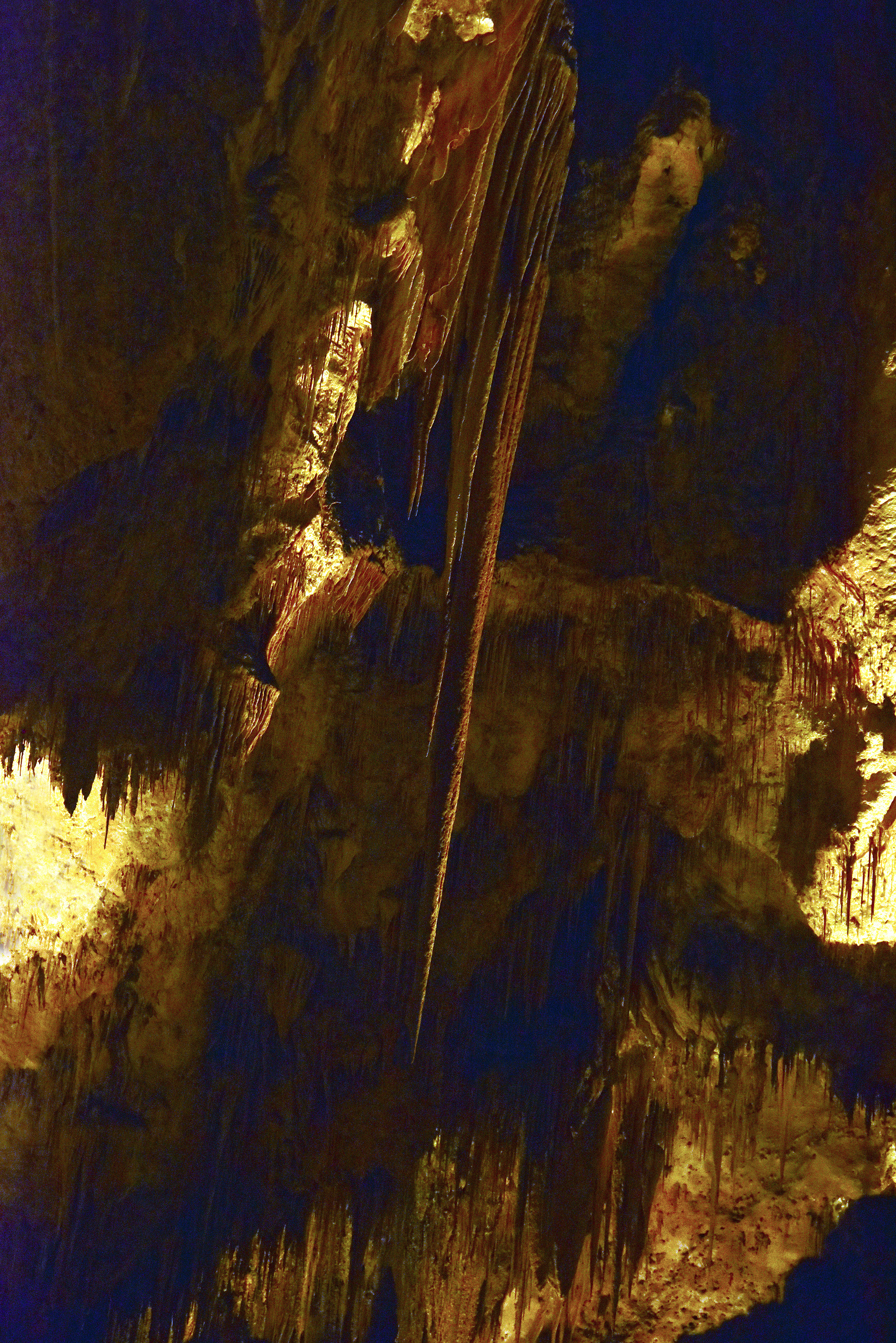
Formation of most stalactites is initiated as soda straws. If water flows on their external surface, they begin to grow in thickness and obtain a conical form.
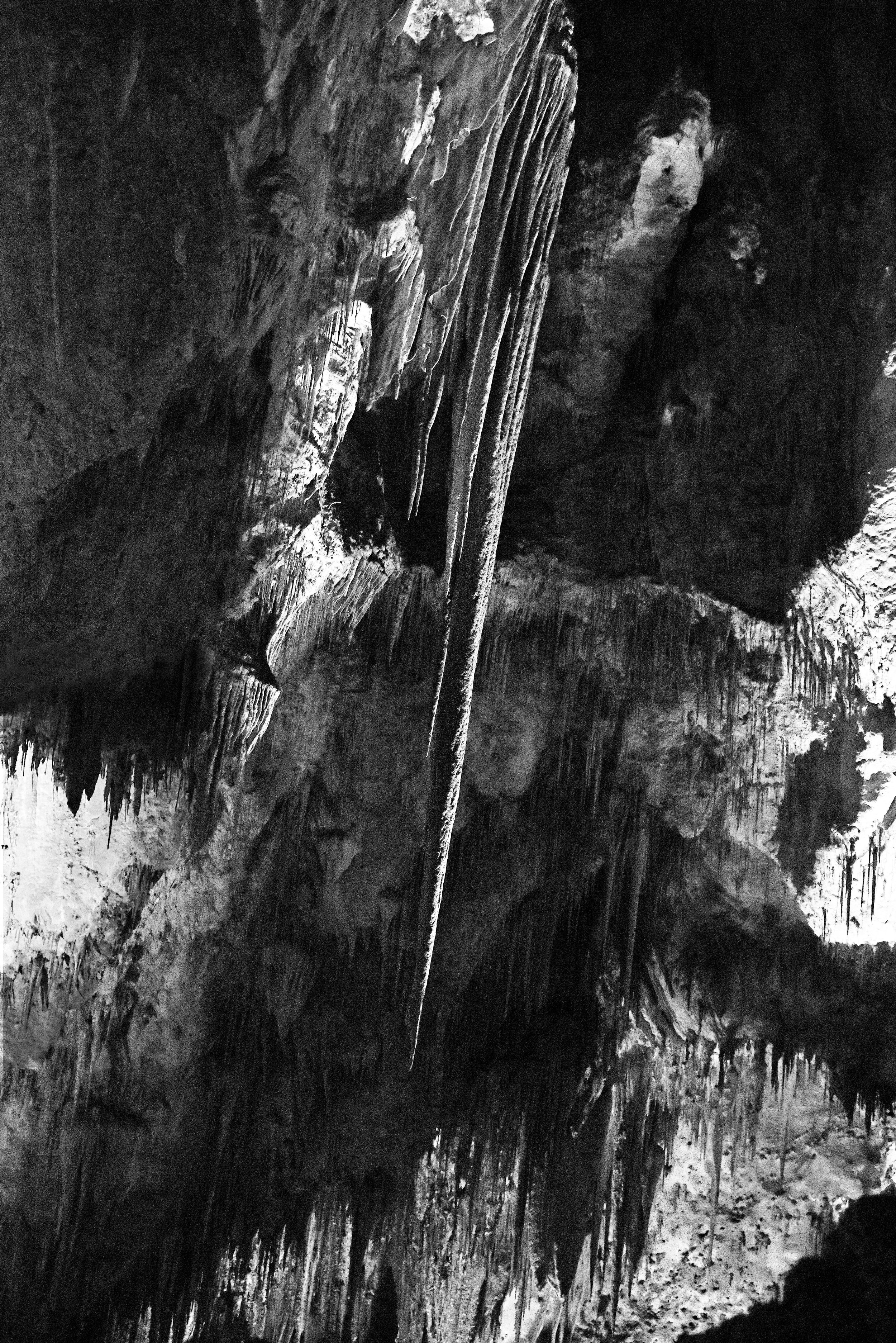
Most scientists believe that the color of speleothems are determined by the mineral content. Pure calcite is white and almost colorless.
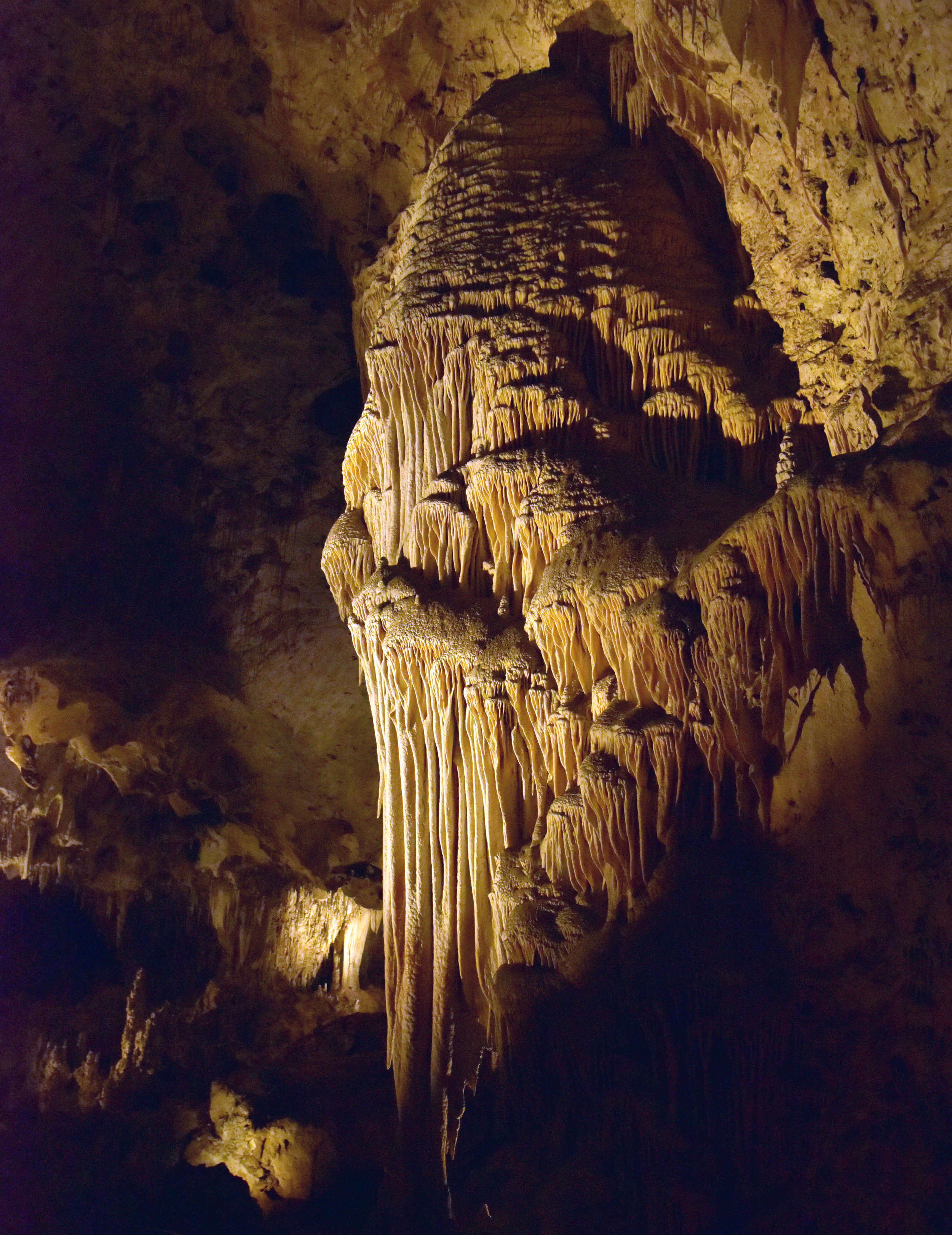
Draperies or curtains are thin, wavy sheets of calcite hanging downward.
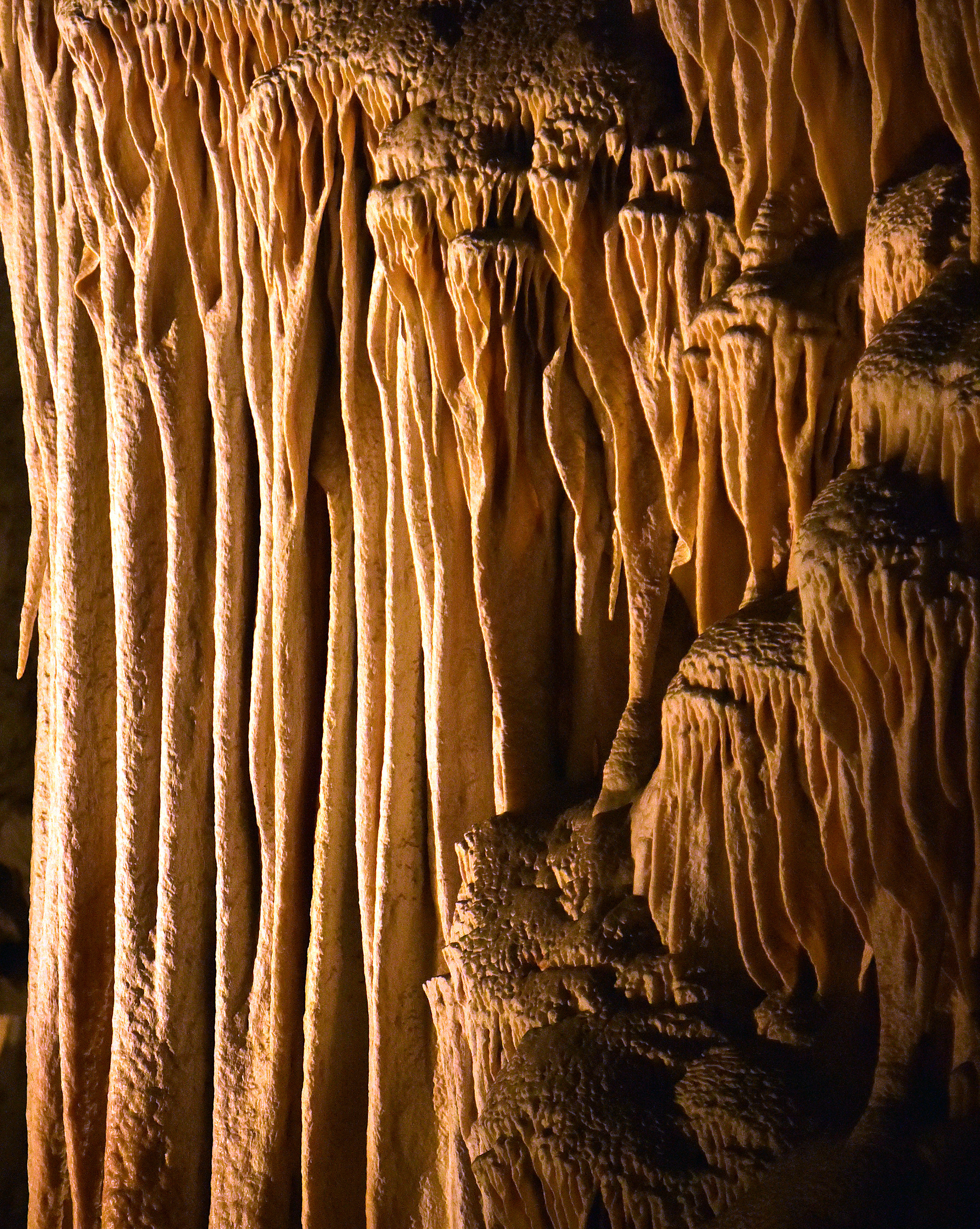
When some stalactites touch each other they form a drapery with a curtain-like appearance.
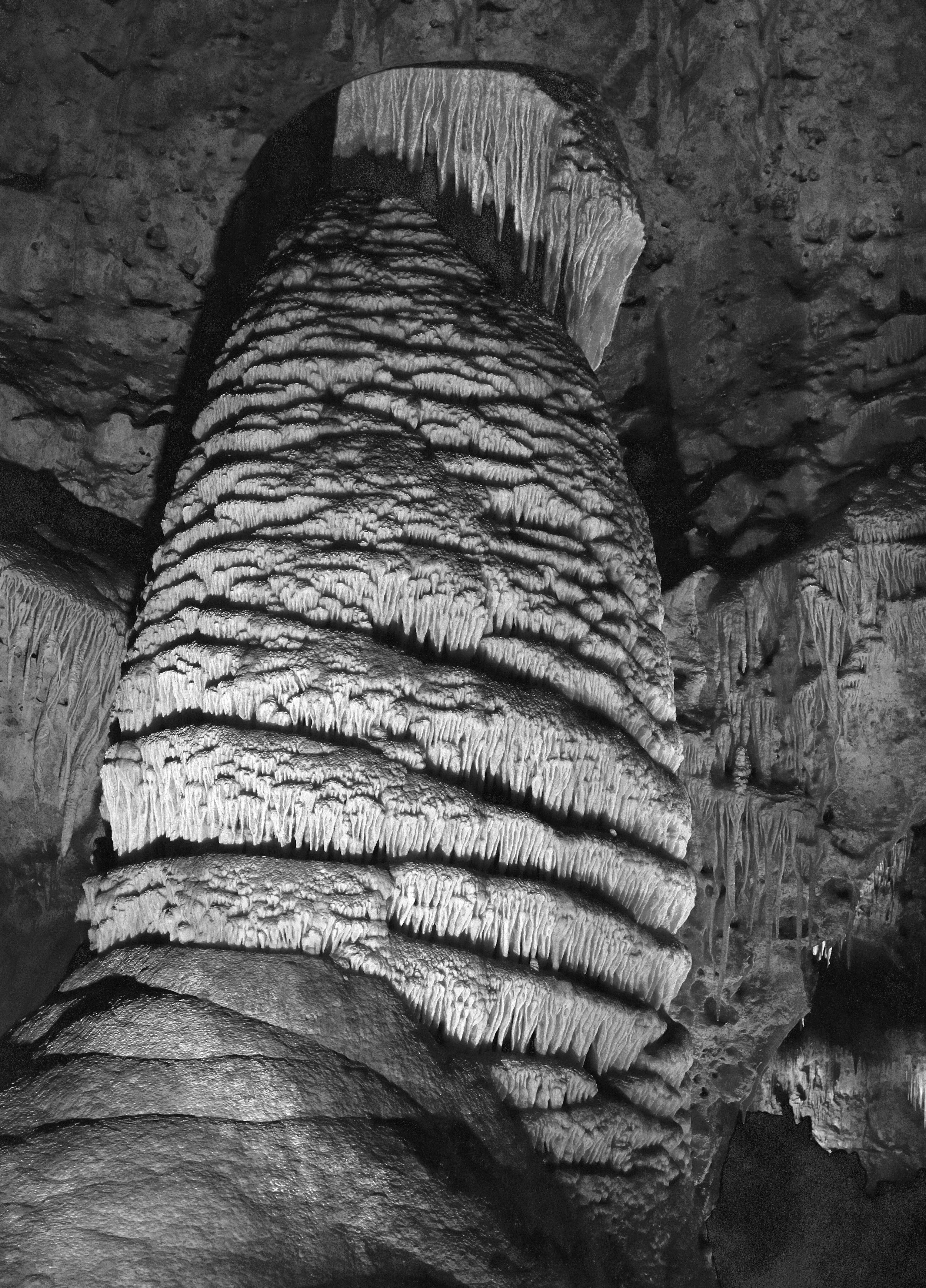
Tradition has it that this stalagmite got its name from an event that occurred in the early 20th century when a renowned baritone, Cameron McClean, while touring the cave burst into the hymn Rock of Ages when he saw this formation in the Big Room.
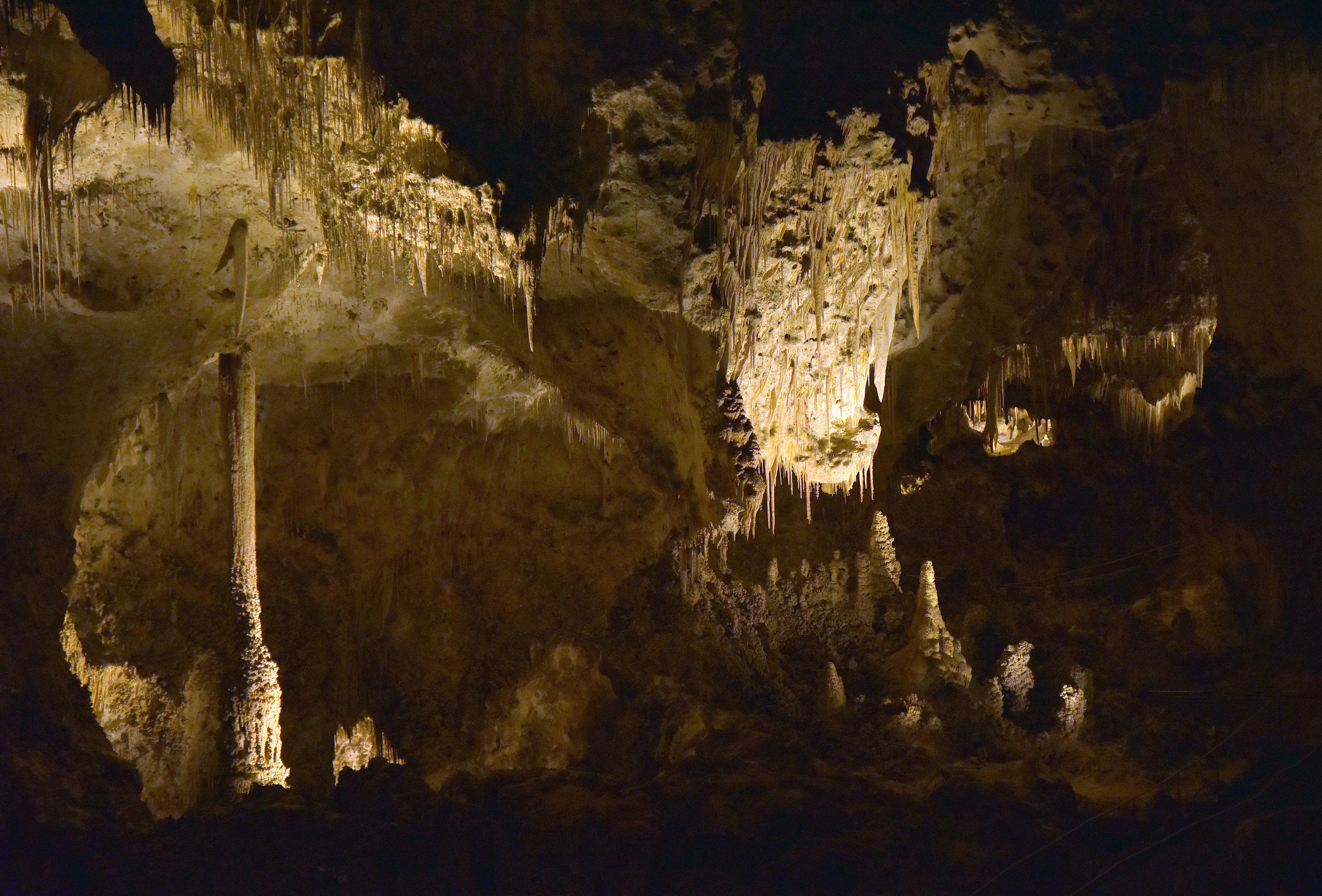
Speleothems form at varying rates as calcite crystals build up. Two important factors that determine rate of growth are the temperature outside (which affects the rate of decay of plants and animals, hence the amount of carbon dioxide in the soil), and the amount of rainfall. The shapes of speleothems are determined by how the acidic water enters the cave (by dripping, seeping, or splashing) and how the water stands or flows after entering the cave.

As compound cave formations, Columns include among their ranks the tallest free-standing speleothems in the world.
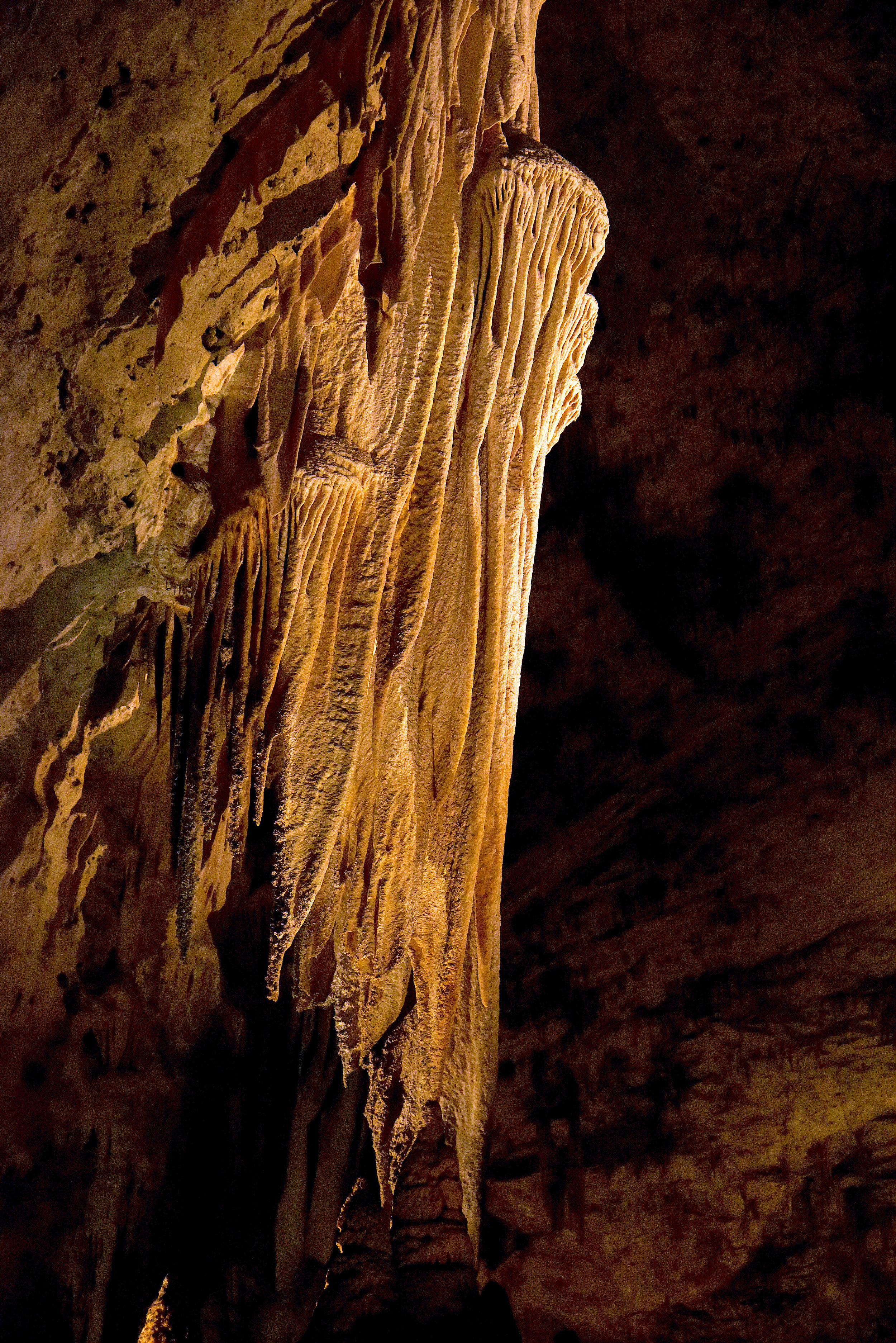
When a water drop emerges on a vertical wall, gravity drags it down the side of the wall depositing calcite in a line. Each additional deposit builds up this fine line until it looks like hanging material. Draperies with red hues, caused by iron and other minerals in the calcite solution, look like bacon strips.
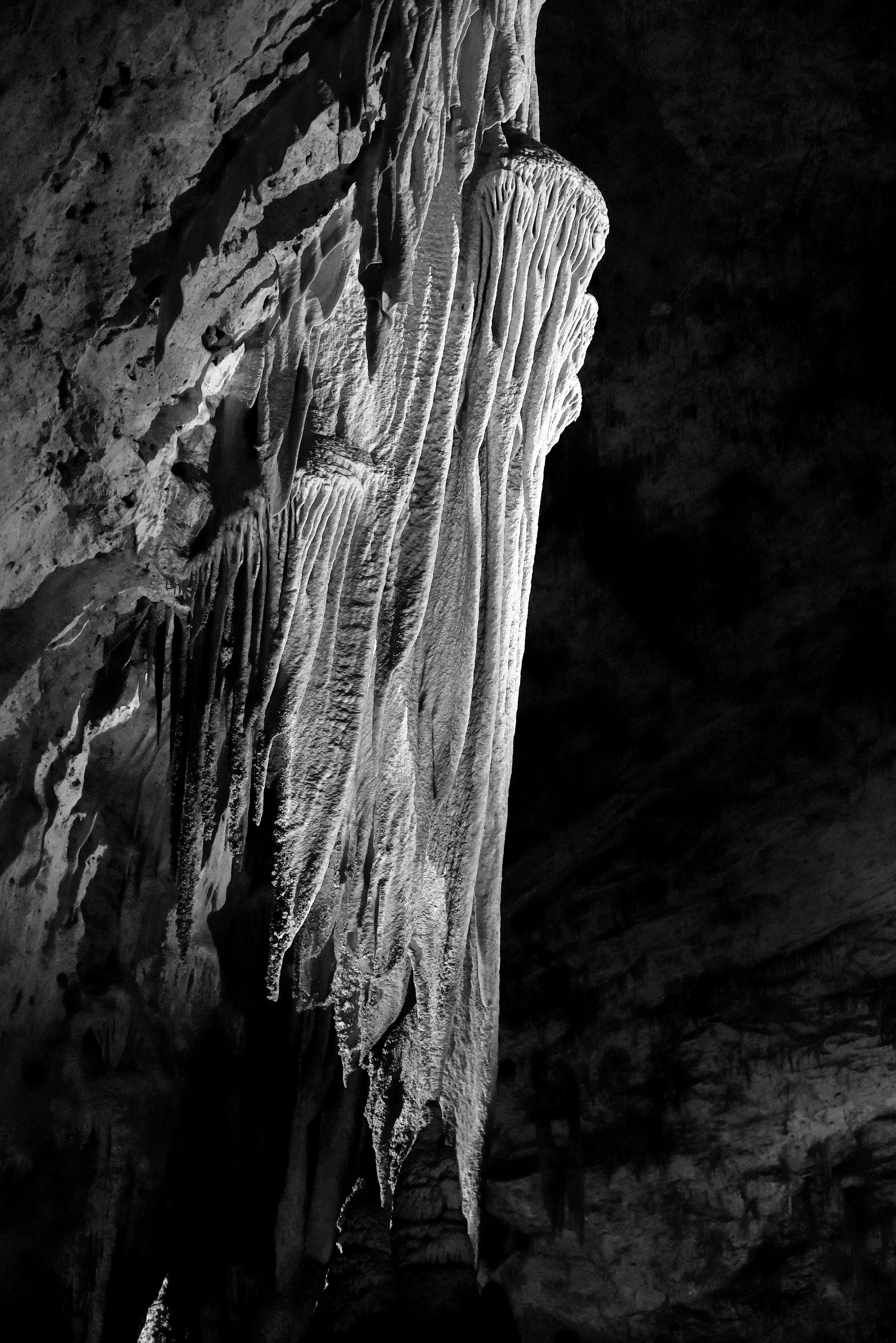
As these formations grow, small undulations in the bedrock cause the draperies to become slightly curved. With time these curves become more and more accentuated so that the draperies become highly folded or furled along their lower edges.
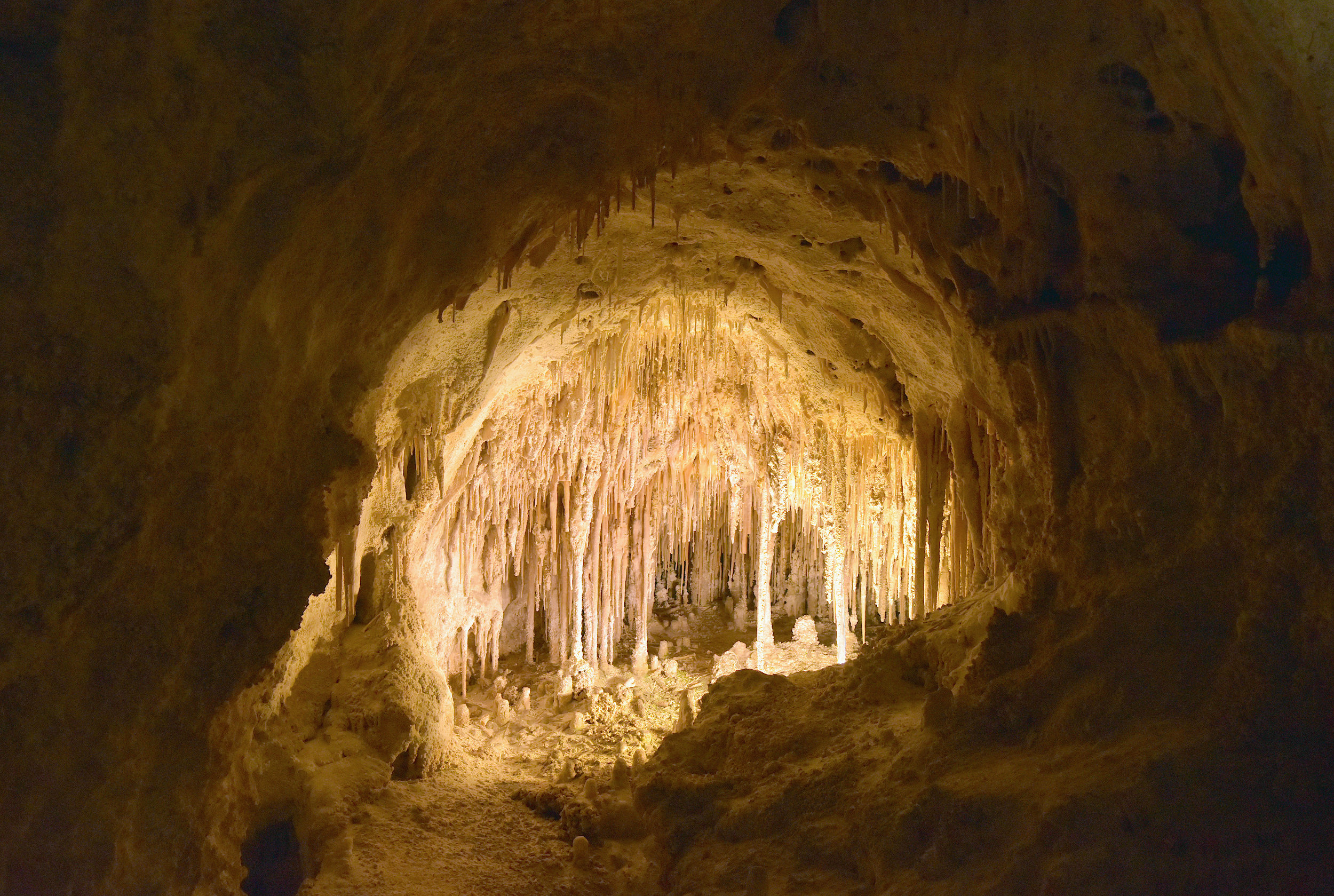
The Doll's Theater, with its soda straws and small columns, is located in the Big Room, near the end of the loop path.
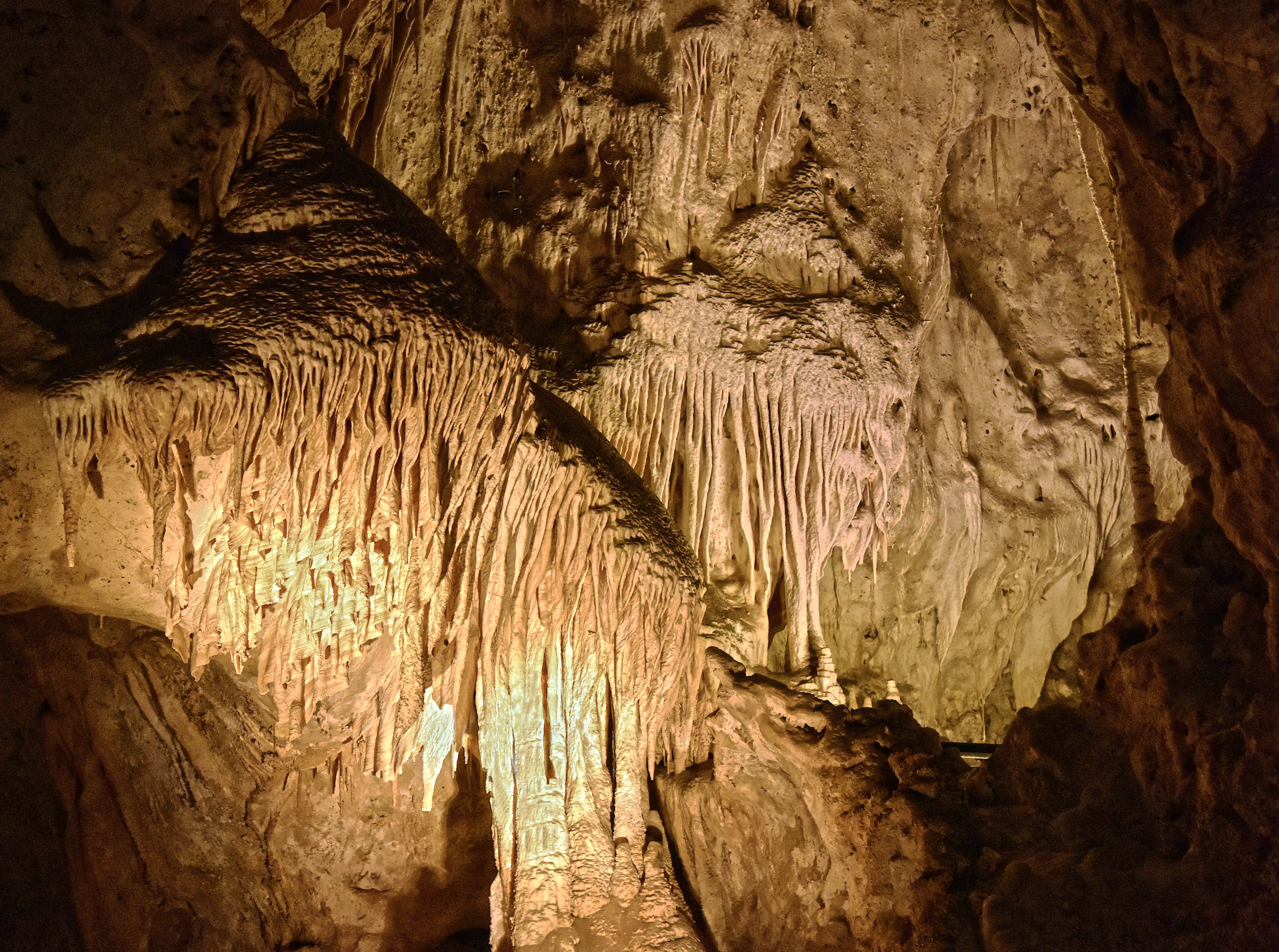
All changes in the amount of water change the relation calcite/iron oxide and therefore the color of the depositing calcite crystals. As the curtain grows in layers, there are stripes inside the curtain, normally from the beginning to the end of the curtain. This characteristic of curtains leads to names like the "bacon" or "bacon rind" formation.
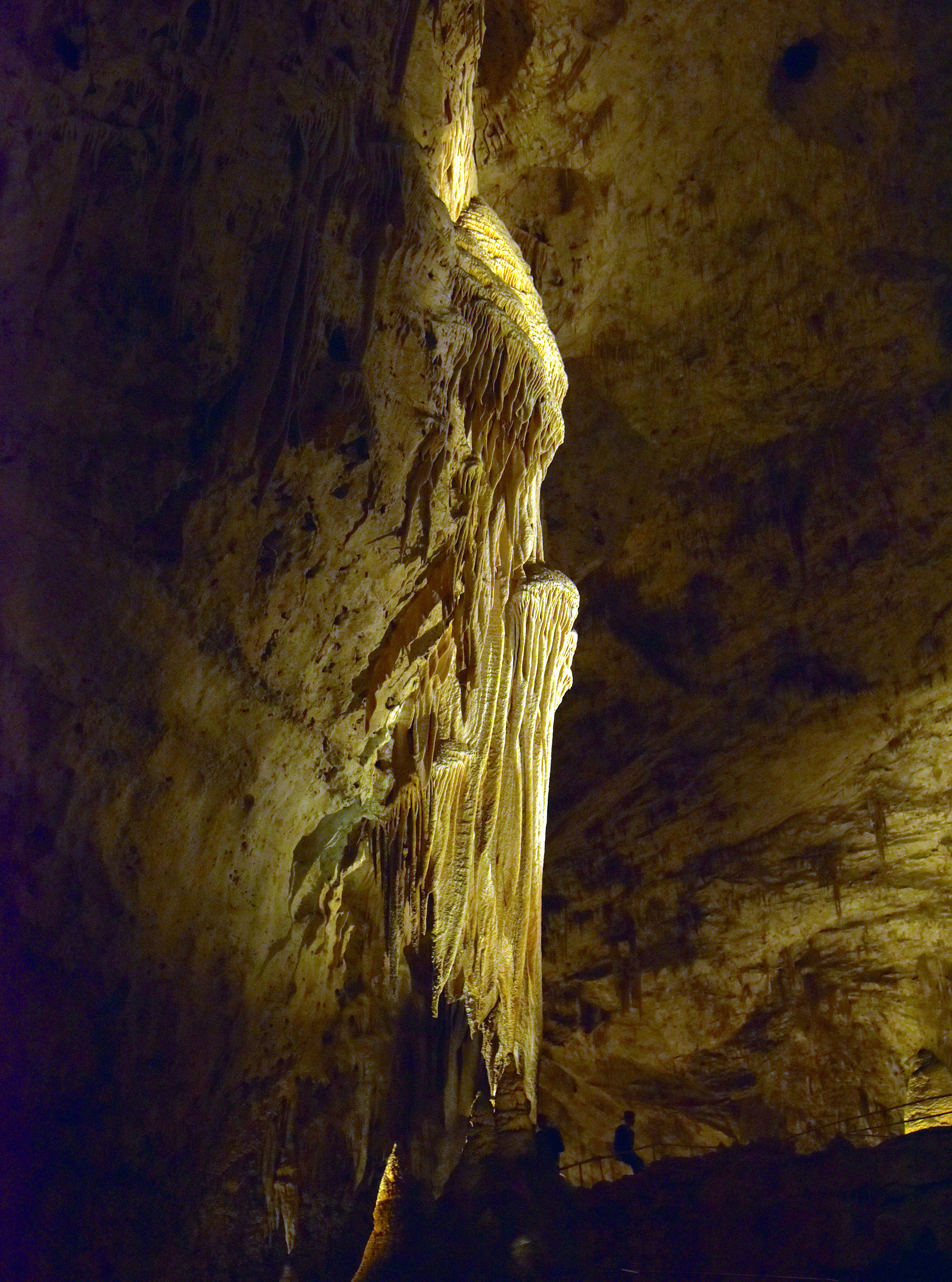
Carlsbad Caverns National Park, New Mexico
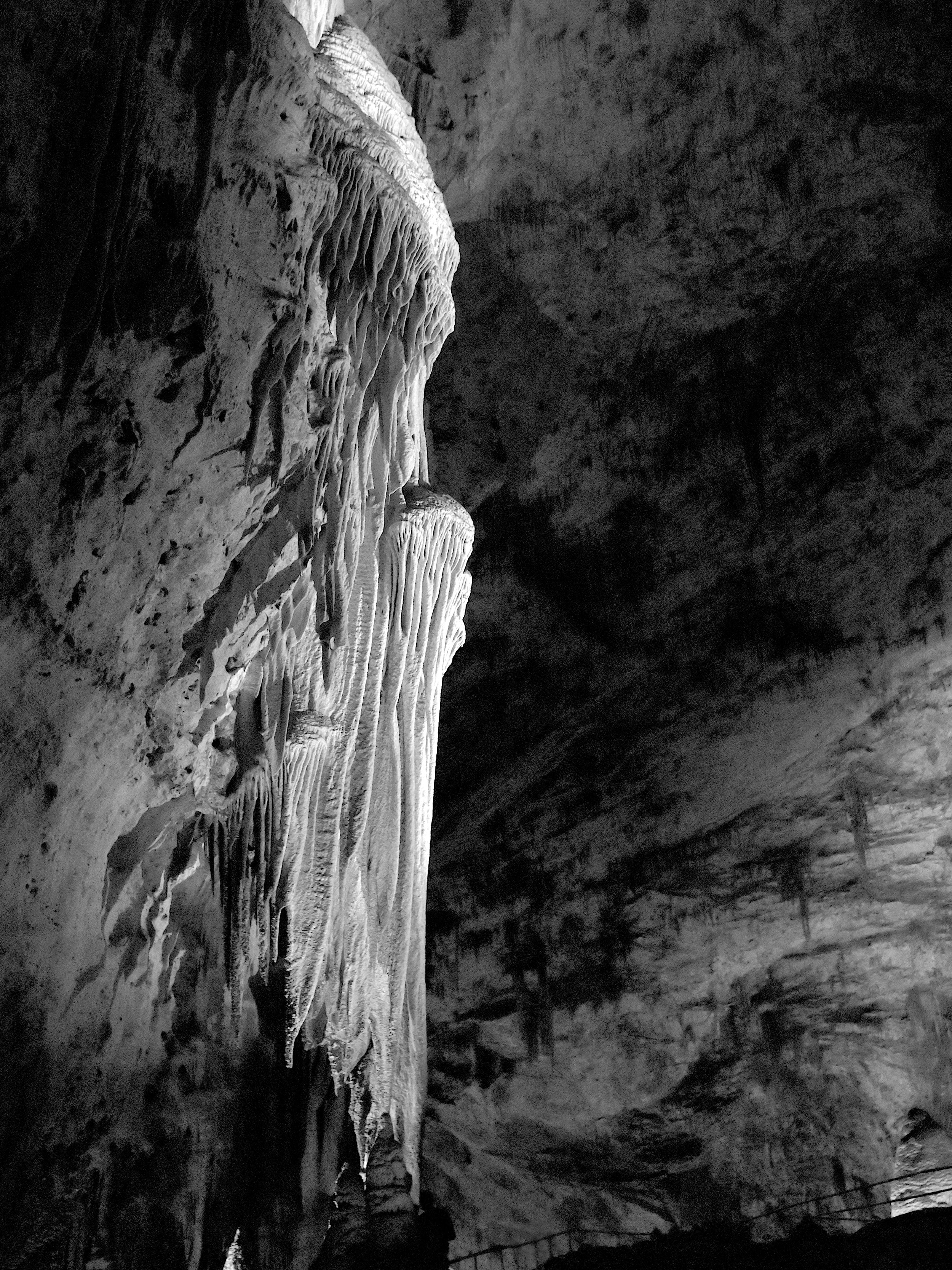
Carlsbad Caverns National Park, New Mexico
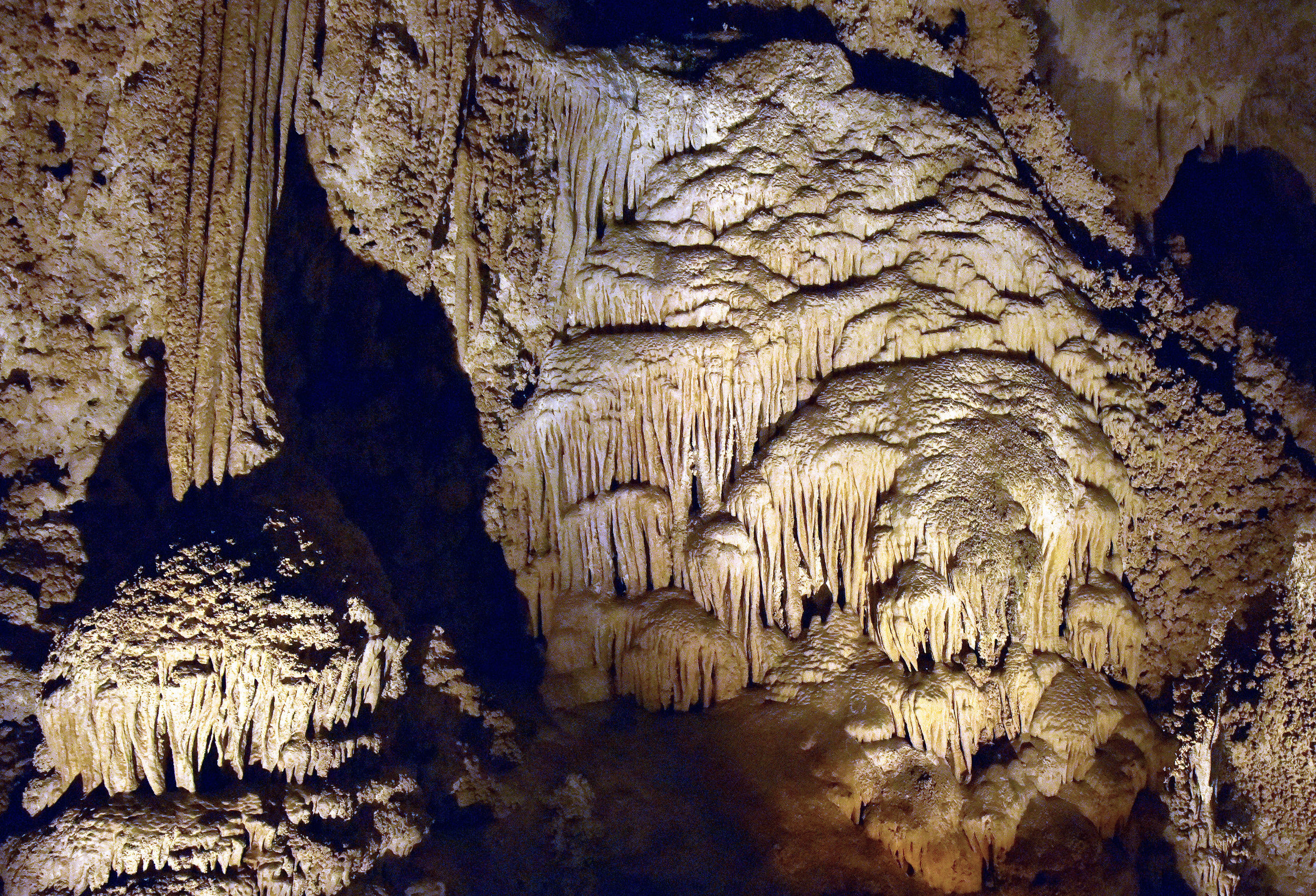
Flowstones are composed of sheetlike deposits of calcite or other carbonate minerals, formed where water flows down the walls or along the floors of a cave. Here are drapery and ripple-shaped patterns of flowstone speleothems in the Big Room.

Cave popcorn can form as water seeping through limestone walls or splashing onto them leaves deposits when CO2 loss causes its minerals to precipitate (i.e., become solid from a solution). When formed in this way the resultant nodules have the characteristics of small balls of flowstone.
